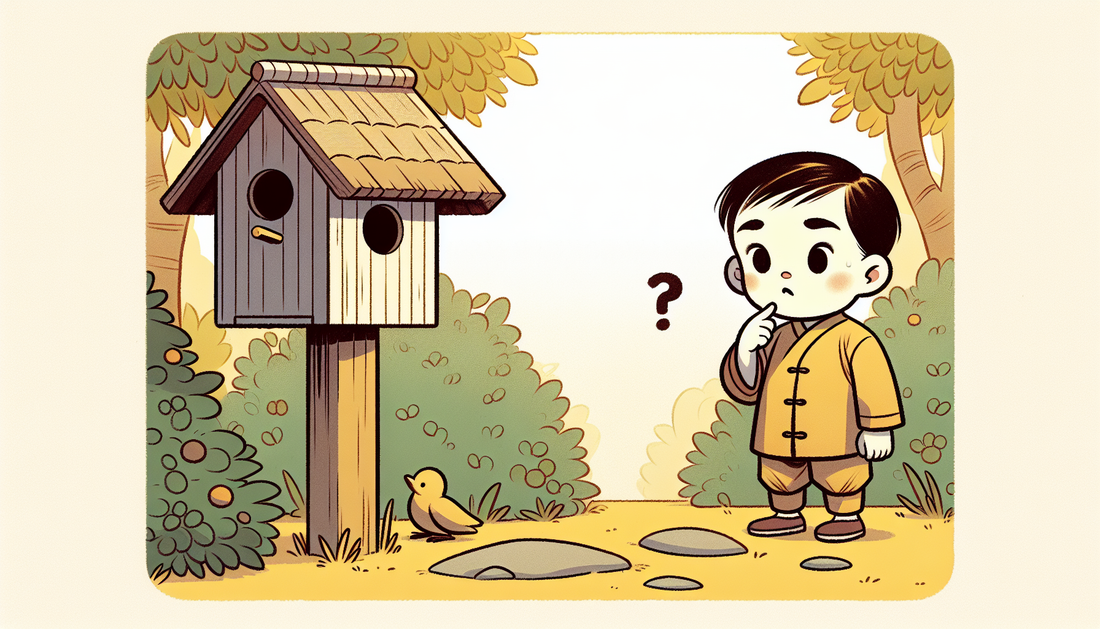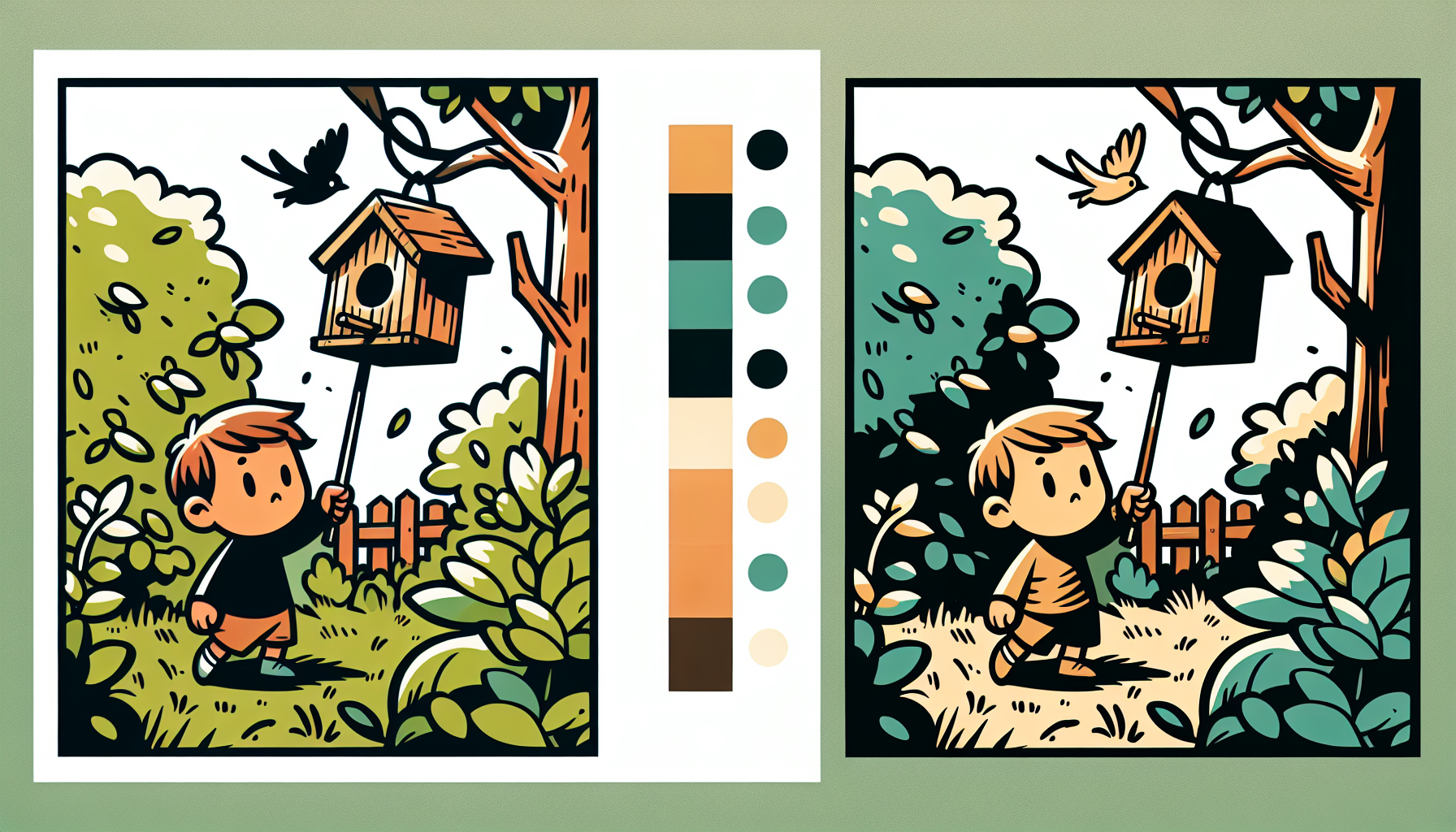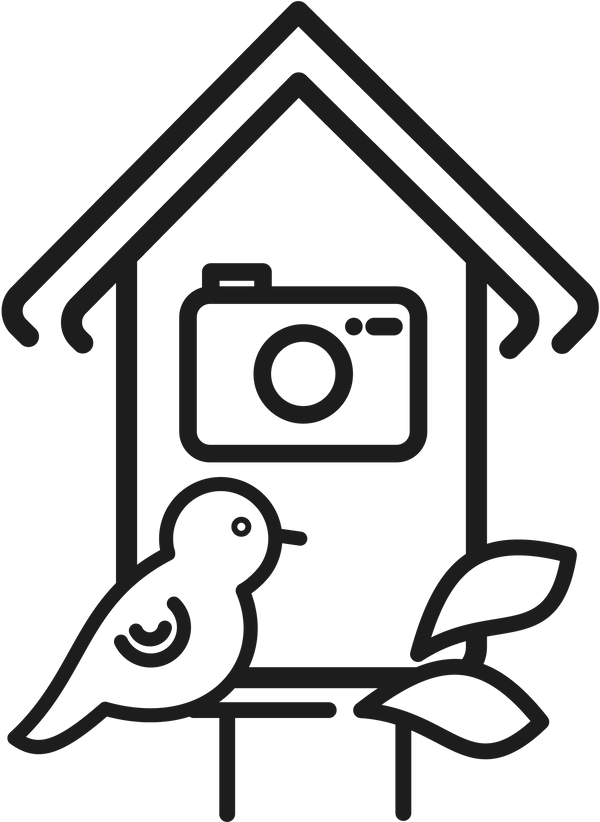
Choose the right nesting box location: How to encourage birds in the garden
A nesting box brings life to the garden and supports species conservation - but it's a well-planned nesting box location with suitable plants, shelter and food that makes the difference. In this guide, we show you step by step how to design the environment around the box so that birds will accept it reliably. You will learn which native shrubs and flowering plants are useful, how to keep predators away and why seasonal planning is important. We also explain how nest box cameras, Wi-Fi and power supplies work in practice without disturbing the animals. With clear recommendations for the garden, patio and balcony, you can create a near-natural mini-ecosystem that enables breeding, rearing and safe retreats. Rely on regional plants, quiet zones and smart, animal welfare-compliant technology to turn a small house into a real home for birds.
Why is the environment so important for nesting boxes?

Even the best box will remain empty if the environment is not right. Birds choose their breeding site based on safety, availability of food and peace and quiet - the location of the nest box is just one component. The aim is a structurally rich area that offers protection, water and short distances to food.
Choose native shrubs, perennials and herbs that attract insects and provide berries. This creates a natural food web that supplies breeding pairs during the strenuous rearing phase. Avoid pesticides so that the insect base remains stable.
Plants, structure and microhabitat
Dense shrubs and hedges provide cover from cats, magpies and sparrowhawks. Climbing plants provide a screen and offer approach opportunities close to the box without blocking the entrance. A small watering hole with a shallow edge completes the offer.
Plan the vegetation in tiers: ground cover, perennials, shrubs and small trees. This allows different species to find suitable perches and food. Keep the area directly in front of the entrance hole clear so that birds have a clear view.
- Native shrubs: hawthorn, elder, hazel, rosehip, cornelian cherry.
- Climbing plants: Ivy, wild vine, clematis; keep a distance from the entrance.
- Flowering plants: Lavender, sunflowers, sage, knapweed for insects.
If you have space, create a small wildflower meadow or a deadwood corner. Both encourage beetles, spiders and caterpillars - important proteins for nestlings. Piles of leaves and brushwood provide additional nesting material.
A species-appropriate environment can also be created on the balcony. Tubs of wild perennials, an insect hotel and a bowl of water create a safe island in the city. Make sure they are securely fastened and free from draughts.
Include the nesting box location in your garden maintenance. Less mowing and mulching encourages flowers and insects. Working with nature significantly increases the chance of occupied boxes.
For more in-depth information on near-natural bird protection, associations offer helpful overviews. The NABU website is a good place to start. nabu.de
Which bird behavior influences the choice of nest box?
Birds follow fixed patterns when choosing territories, mating and breeding. If you know these processes, you can choose the nest box location precisely and place it in good time. This will significantly increase the success rate for the desired species.
The main breeding season in Germany is roughly between March and July. Many species start searching for territories in late winter, checking cavities and securing roosts. A box that is installed early is more likely to be classified as safe.
Breeding seasons and timing
Ideally, nest boxes should be installed in late fall or by February at the latest. This leaves enough time for exploration and the material can evaporate. If you start later, you risk empty boxes or later second broods.
Some species use nest boxes as roosts in winter. This strengthens the bond with the location and makes it easier to decide on breeding later on. Ensure a quiet, draught-free location without permanent lighting.
Species preference varies depending on the entrance hole, height and surroundings. Tits like insect-rich gardens, sparrows benefit from hedges and short distances to food. Starlings prefer clear flight paths and robust boxes.
Winter feeding with a sense of proportion
Feeders help resident birds through tough periods and anchor the garden as a safe place. Clean silos regularly and offer species-specific mixtures. Hygiene prevents disease transmission and mold.
- Grain eaters: sunflower seeds, millet; offer dry and mold-free.
- Soft feed eaters: oat flakes, raisins, fruit; no salted food.
- Water: Flat bowls, cleaned daily, supplement the diet.
Feed constantly over cold periods when you start. Irregular feeding forces energy-intensive foraging flights. Place food away from the nest boxes to avoid attracting predators.
Obtain additional information from recognized associations. There you will find seasonal recommendations for feeding and nesting aids. The LBV provides an overview. lbv.de
With the right timing, species-appropriate food and quiet zones, the acceptance rate increases noticeably. The nest box location thus becomes part of a reliable territory. This pays off in terms of successful broods.
Tips for choosing the ideal location for nest boxes
The nest box location determines acceptance, breeding success and young bird health. Pay attention to orientation, height, wind protection and disturbances. Small corrections often have big effects.
Light, wind and weather
In Central Europe, an orientation to the east or south-east is best. Morning sun warms, while the heat is kept out in the afternoon. A slight forward tilt prevents rain from penetrating.
Avoid permanent sun and locations exposed to wind. Microclimates are more stable under canopies or on sheltered house walls. Trees provide natural shade as long as branches do not form climbing bridges.
The installation height influences safety and tranquillity. A height of 2-3 meters above the ground is recommended, on balconies correspondingly higher. Check support and vibrations, especially on facades.
Safety from predators
Cats, martens and crows are the main enemies of the box. Keep at least two meters away from stable "bridges" such as railings or thick branches. Smooth posts with protective collars significantly increase safety.
- Height: 2-3 meters, freely approachable, without climbing aids nearby.
- Orientation: East/southeast, protected from the wind, slightly inclined forwards.
- Protection: Sheet metal collars, marten collar, no cords or decorations on the box.
Choose quiet areas away from doors, play areas and constantly used paths. A distance of three to five meters from feeding areas prevents conflicts. Motion detectors or bright lights should be avoided.
Check the location annually and adjust any branches that grow back. A clean approach corridor reduces stress and missed flights. This keeps the nest box location attractive for years.
For basic information on hanging and suitable surroundings, it is worth taking a look at the information provided by NABU. There you will find further practical tips. nabu.de
Technical aids: Cameras and WLAN in the garden
With modern technology, you can observe the breeding activity without disturbing it. A suitable nest box camera, stable Wi-Fi and a secure power supply are the basis. Always plan technology with animal welfare and the law in mind.
Select nest box camera
Choose a compact camera with IR LEDs without visible red light so that night shots can be taken without harming the animals. HD resolution and wide-angle optics provide clear images in narrow boxes. Look out for quiet devices without continuous light.
Wired systems score points for their stable data and power supply. WLAN models with a rechargeable battery offer flexible installation, but require a good signal and charging management. Apps with time lapse, motion detection and data protection options are practical.
- Cable: Stable, weatherproof, ideal for nearby sockets and fixed installation.
- WLAN: Flexible, with battery or solar panel, requires repeater or mesh.
- Storage: Prefer local SD card or encrypted home cloud.
Install cameras outside the breeding season and avoid openings during the rearing of young. No flashes, no acoustic signals and no permanent white light. Respect for rest periods has top priority.
Clever solutions for WLAN and electricity
Repeaters or an outdoor mesh system help to ensure stable transmission. If possible, position the node in line of sight of the box. 2.4 GHz Wi-Fi often has better range through walls and plants.
For power, a long, weatherproof USB cable with a power supply unit is the best option. Alternatively, large power banks with time-controlled operation work well. In remote corners, solar panels with a backup battery are a low-maintenance choice.
Think about weather protection and strain relief for all cables. Mounts should be low-vibration and easy to maintain. This ensures that the nest box location remains technically reliable and animal-friendly.
Care, maintenance and law in Germany
Well-maintained nest boxes remain attractive and hygienic for longer. Cleaning after breeding is mandatory and protects against parasites. At the same time, there are clear nature conservation rules that you must observe.
Cleaning and parasite prophylaxis
Ideally, clean the box in the fall with hot water and a brush. Remove old nests, droppings and remains from the entrance area. Avoid using chemicals to prevent residues.
Check hinges, suspension and weather protection annually. Minor repairs prevent consequential damage and moisture in the interior. Untreated diatomaceous earth can be used selectively in cases of heavy infestation.
- Timing: Cleaning outside the breeding season, ideally October to January.
- Visual inspection: cracks, moisture, loose screws, free entry.
- Environment: Keep approach clear, cut back vegetation, clean watering hole.
Legal basis in Germany
The Federal Nature Conservation Act protects wild birds and their breeding sites. During breeding, nests may not be disturbed, removed or destroyed. Find out about possible breeding sites before carrying out construction or renovation work.
You can find information on the legal basis and exceptions in the legal text online. Further practical questions can be answered by regional nature conservation associations. Starting points are the law portal and association websites. gesetze-im-internet.de/bnatschg_2009
FAQ: Frequently asked questions
- When do I hang up the box? Ideally in late fall, by February at the latest, so that the nest box location is discovered early.
- What height is ideal? 2-3 meters, freely accessible, without climbing aids in the immediate vicinity.
- Can I look during the breeding season? No, the box remains closed; disturbance endangers the brood.
- Which plants help? Native shrubs, wild perennials and flower-rich meadows encourage insects and berries.
- How do I prevent predators? Distance from "bridges", smooth stakes, cuffs and a quiet location without food directly next to the box.
Now implement the tips step by step and observe the results. A well thought-out nest box location with a natural environment and sensible technology pays off every season.
